The testosterone goes at its peak in early adulthood and keeps declining as men age. This hormone level goes down approximately 1-2% each year after their 40s. When men reach their 50s, the drop can lead to issues like losing muscle and feeling sad or anxious.
There are problems with erections or changes in sex drive, having less energy, experiencing hot flashes, gaining weight, and getting anemia. While in some cases, it cannot be treated, due to specific reasons, there are definite low testosterone treatments for men.
What is Low Testosterone or Hypogonadism?
Hypogonadism, commonly known as Low Testosterone, is a condition characterized by insufficient testosterone levels in the male body. Testosterone plays a pivotal role in male sexual characteristics development and is essential for maintaining bone density, muscle mass, and general health.
As men age, their testosterone levels naturally decrease. It can lead to a reduction in sexual function, energy, and muscle mass. Many treatments for low testosterone, or hypogonadism, are available.
Symptoms
The following are common indicators of low testosterone. Testosterone Replacement Therapy (TRT) is designed to address these symptoms by restoring testosterone levels to a healthy range-
- Low libido (diminished sex drive)
- Erectile dysfunction (complexity of achieving or sustaining an erection)
- Low muscle mass and power
- High body fat
- Low bone density
- Exhaustion and low energy levels
- Depressed or dejected mood
- Trouble focusing and sleeping
It is important to note that these symptoms can result from various causes. Experiencing one or several of them does not definitively indicate hypogonadism. Typically, a blood test is required to confirm whether low testosterone is a contributing factor or a potential cause among several others. Then the best treatment for low testosterone is planned.
Diagnosis
For testosterone treatment for men, confirming the presence of hypogonadism usually involves conducting two blood tests. It is preferably performed before 10 a.m. Fasting is not always mandatory, although one can do it in conjunction with other tests. It's worth noting that a low total testosterone reading alone does not definitively diagnose low testosterone.
Conversely, a man with a normal testosterone reading may still experience low testosterone symptoms. This discrepancy can occur because some individuals have elevated protein levels in their blood that bind to testosterone, preventing its effective utilization. Therefore, assessing free or bioavailable testosterone levels is often more informative in determining, and assessing the best low testosterone treatment.
Once the doctor establishes the diagnosis of low testosterone, individuals face critical decisions regarding their treatment options. However, the primary thought is whether they desire to have children or continue to do so.
In many cases, testosterone replacement therapy can serve as an effective contraceptive method, as it generally suppresses testosterone production in the testes for most men. This suppression correlates with low sperm production and testicular volume. It is imperative to communicate your fertility intentions to your healthcare provider. Various strategies can preserve the possibility of fathering children while also increasing testosterone levels.
Natural Way to Increase Testosterone
Don’t want medications? For those preferring low testosterone natural treatment to enhance testosterone production, here are three key strategies to focus on:
The most potent natural method to boost testosterone production is via sleep. It's not just about the duration but also the quality of sleep that matters. Conditions like sleep apnea can disrupt hormonal activities during sleep, leading to inadequate testosterone production.
Testosterone release primarily occurs during deep sleep, specifically during stages 3 and 4, which usually peak between 2-4 a.m. This deep sleep stage triggers signals from the pituitary gland in the brain to stimulate the testes for testosterone production. Getting a good night's sleep, ideally, 7-8 hours, is essential to support consistent testosterone production throughout the day. It is a classic natural low testosterone treatment.
Another one for low testosterone treatment is changing the diet. Diet plays a crucial role in influencing testosterone production. An increase in calorie intake, especially coupled with a sedentary lifestyle, can lead to fat accumulation, negatively impacting testosterone levels. Fat contains an enzyme namely, Aromatase.
It converts testosterone into estradiol, signaling the pituitary gland to reduce testosterone production. Excess fat can also disrupt breathing during sleep, affecting sleep quality and testosterone production.
Additionally, fat becomes an insulator and can raise testicular temperature, further hampering testosterone and sperm production. Reducing overall calorie intake, especially for overweight or obese individuals, can naturally elevate testosterone levels. It often aligns with high-protein diets, which promote satiety with fewer calories.
While certain foods increase testosterone, evidence supporting specific dietary items remains inconclusive. There are recommendations for high sterol foods, but there isn’t much evidence regarding its correlation with an increase in testosterone.
Engaging in physical activity is another significant factor in increasing testosterone levels. It is one of the best low testosterone treatments. Studies have explored the impact of exercise on testosterone, highlighting two main types: cardiovascular and resistance training.
Recommendations suggest at least 30 minutes of cardiovascular exercise three times a week and at least 30 minutes of exercises targeting major muscle groups (such as thighs, back, and chest) three times a week. These exercises can include strength training with weights, high-repetition interval training, or body resistance workouts like yoga.
Implementing the natural low testosterone treatments can promote healthy testosterone levels while enhancing overall well-being.
Other Ways to Increase Testosterone
Regardless of the above, some men may still experience low levels of testosterone. For them, there are many choices, from rising testosterone production to taking testosterone to a combination of the two.
1. Endogenous Stimulation
There exist methods to encourage the body to naturally boost its testosterone production instead of administering exogenous testosterone. This approach offers distinct advantages, as it aligns more closely with the body's natural processes and is generally associated with a lower risk of potential side effects associated with testosterone replacement. Several techniques can achieve this-
- Selective Estrogen Receptor Modifiers (SERMs)
SERMs are medications used for various purposes. The primary application in men is the enhancement of pituitary gland function, specifically in signaling the testes to increase testosterone production and, sometimes, sperm production. Among these medications, Clomiphene citrate, commonly known as Clomid, is the most widely recognized.
These medications are usually provided in pill form. The main side effects of SERMs may include headaches or, in some instances, visual disturbances. In certain men, the low testosterone treatment can paradoxically lead to reduced libido and subsequently impact erectile function. It can be because of effects on other regions of the brain.
Aromatase Inhibitors constitute a category of medications designed to hinder the conversion of testosterone into estrogen. It happens by obstructing the enzyme responsible for this process, known as aromatase.
This reduction in estradiol levels can inadvertently signal the pituitary gland that testosterone levels are low, prompting the pituitary to stimulate the testes to increase testosterone production and in some cases, sperm production.
Common examples of aromatase inhibitors include anastrozole, letrozole, and Aromasin (also known as exemestane). They are taken in pill form. While these medications may potentially lead to side effects such as headaches and visual disturbances, the incidence of these issues is relatively low.
Similarly, decreases in libido are less common but can still occur. It's worth noting that this testosterone treatment medication may carry the rare risk of tendon rupture and bone density problems. If men experience any tendon tenderness, particularly in the Achilles tendon, they should discontinue use and seek medical attention.
- HCG (human Chorionic Gonadotropin)
HCG, or Human Chorionic Gonadotropin, is another medication for low testosterone. It is administered via injection rather than in pill form. There are lozenge versions of the medicine, but their effectiveness remains unproven.
HCG acts as a substitute for Luteinizing Hormone (LH), a pituitary hormone that stimulates the testes to produce testosterone. It proves beneficial in two primary scenarios. Firstly, for men receiving direct testosterone treatment who wish to maintain some natural testosterone production, preserving sperm production and testicular volume. Secondly, it benefits men with non-functional or inadequately functioning pituitary glands.
Doctors generally give HCG injections intramuscularly, although some men inject them into fat with still effective outcomes. It's important to note that HCG use is linked with cyst development in breast tissue.
Some individuals may also experience tachyphylaxis with HCG. It is a condition where testosterone-producing cells become less responsive to increasing doses. It happens, especially when transitioning from or concurrently using direct testosterone therapy.
Moreover, HCG has a half-life, necessitating frequent or daily injections. It can become financially burdensome as HCG can be challenging to source and costly, often without insurance coverage. So think about sourcing and the low testosterone treatment cost before deciding.
2. Exogenous Testosterone
Endogenous testosterone pertains to the testosterone naturally generated within the body, with methods for enhancing its production discussed earlier. Exogenous testosterone, on the other hand, refers to testosterone supplied from an external source, usually through injections or gels.
The primary difference between the two is in the source of testosterone. Endogenous testosterone arises naturally from within the body, whereas exogenous testosterone comes from an external source.
The FDA has granted approval for several forms of exogenous testosterone for use in the United States, including-
It is a medication applied directly to the skin and is available under various brand names, including Axiron, Fortesta, Testim, and AndroGel. Its advantages include a swift onset of action and convenient application. However, it comes with certain risks, such as potential skin irritation and unintended disclosure to others.
For example, Axiron is intended for application under the armpit, while Fortesta, is on the thighs. Normally, these gels require 5-10 minutes to dry before wearing the clothes. It's important to note that the effectiveness of these medications tends to be lower compared to injectable forms of therapy and may not work for approximately 25% of men.
This medication is administered topically to the skin and is sold under the brand name Androderm. Its advantages include a swift onset of action and straightforward application.
However, it carries potential risks such as skin irritation and the chance of unintentional exposure to others, notably through skin-to-skin contact. It's worth noting that these medications tend to be less effective than injections. If a patient finds any issue, they should contact a low testosterone treatment doctor immediately.
This medication is delivered via muscle injection and comes in various forms like Enanthate, Cypionate, and Propionate. Typically, it is administered every 1-2 weeks. It offers a long-lasting effect and cost-effectiveness. These injections are among the most commonly prescribed due to their high efficacy rate, surpassing 90%.
There is also a long-acting form namely, Aveed, requiring an initial injection, followed by additional doses every 10 weeks. However, it takes 13 weeks to reach normal blood levels. Risks include probable pain and inflammation and the possibility of infection on the injected site. Note that all forms of testosterone can lead to a rise in hemoglobin/hematocrit, with injections having the highest rate of this side effect.
This medication involves the insertion of pellets under the skin. It is marketed under the brand name Testopel. Usually, for this low testosterone treatment, one has to administer it every 3-6 months. It offers a sustained effect and more stable blood levels. Risks include potential pain and swelling at the insertion site, along with the chance of infection.
Patients apply the gel to the nasal mucosa. It is available under the brand name Natesto. Generally, it is applied twice or thrice a day, boasting rapid onset of action and ease of use. Notably, this medicine has the least impact on sperm counts among exogenous testosterone forms.
It can be one of the best testosterone treatments for men. Risks include nasal irritation and the need for multiple daily applications due to its relatively short duration of action.
- Oral testosterone replacement
At present, there are two approved oral testosterone therapies for testosterone replacement. Older oral testosterone forms were not FDA-approved due to elevated liver enzymes and, in rare cases, potential liver cancer.
However, newer oral testosterone formulations use a different absorption mechanism. They seemingly mitigate these risks. Clinical trials with these medications have not shown the presence of dangerous concerns. Normally taken twice a day, these oral treatments can lead to gastrointestinal side effects. Peak testosterone levels tend to be lower compared to injection therapy.
Testosterone and Prostate Cancer
The connection between testosterone and prostate cancer is intricate but unclear.
Testosterone, a male hormone, plays a vital role in male sexual function and characteristics.
Conventionally, several medical practitioners have exhibited reluctance when initiating or resuming testosterone therapy for patients with known prostate cancer. However, some of these individuals may see benefits from testosterone replacement. It depends upon their specific type of prostate cancer and treatment history.
Extensive data explains the safety and efficacy of Testosterone Replacement Therapy (TRT) for particular populations with prostate cancer, where the advantages far outweigh the associated risks. It's crucial to have a Urologist with specialized expertise in TRT. They can assess eligibility and determine the most suitable form of testosterone replacement based on individual histories.
TRT can be a helpful treatment for men who struggle with low testosterone levels. If they experience symptoms of low testosterone, it's vital to discuss it with a healthcare provider to assess the aptness of TRT. The healthcare provider can guide men in selecting the optimal TRT method and closely monitor their testosterone levels to ensure they remain within a healthy range.
Dr. Patel is recognized as a regional authority in TRT. He has provided counsel to numerous pharmaceutical companies on national testosterone replacement initiatives. His specialized training in Andrology through fellowship further enhances his skill in this field.
A Special Note from SMIU
At SMIU, a Florida men’s health center, we firmly believe in the importance of compassionate care. Our commitment lies in furnishing men with the tools and assistance required to prioritize their health and well-being. Whether you're seeking insights into specific health issues or seeking resources and support, we're here to assist you.
Here, our team hails from various urology practices, bearing firsthand knowledge of the challenges. Our commitment revolves around integrating the most advantageous elements from our past experiences while pioneering ground-breaking enhancements for patients.
We possess the insight to deliver exceptional care to our patients. We deliver care efficiently and rapidly.
- We provide personalized care
- Look forward to customized services
- Our patients are our top priority
- There is a high-quality medical experience
- Our staff has years of experience and maintain professionalism
- We provide a healthy community
- Expect proper wellness support
